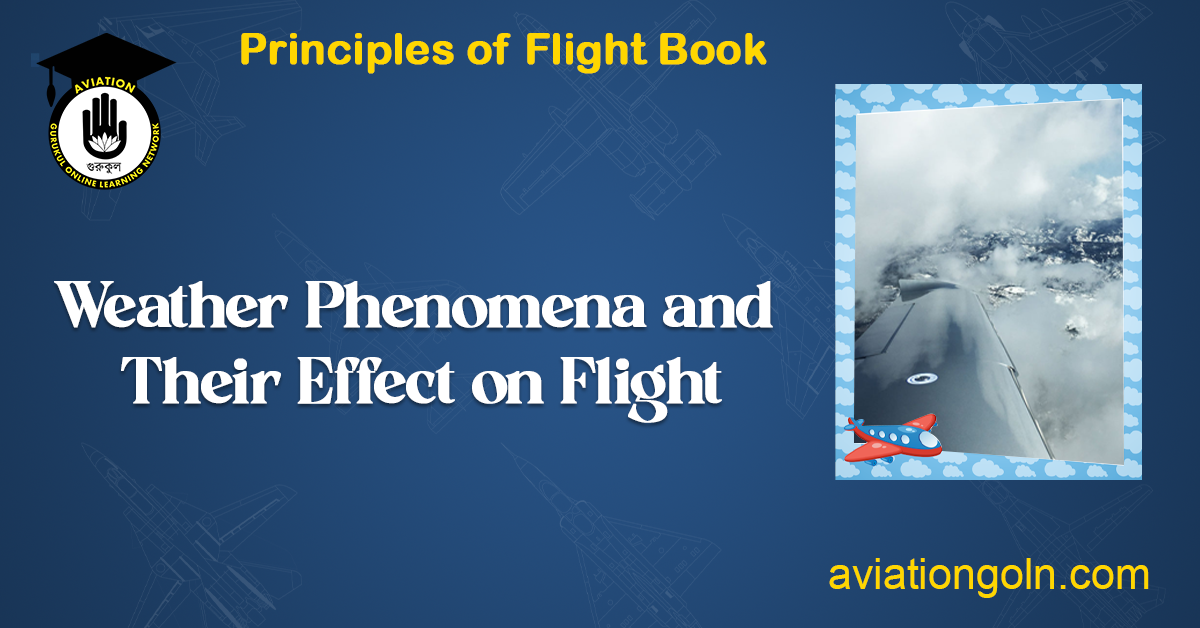When humans first took to the skies, they not only had to master the mechanics of flight but also the art of navigating the capricious atmosphere. Weather phenomena have a profound effect on aviation, influencing flight safety, fuel efficiency, and even the viability of certain routes or altitudes. From turbulence to ice, clear air to thunderstorms, understanding the atmosphere is pivotal for pilots, aircraft engineers, and air traffic controllers. This comprehensive guide delves into several key weather phenomena and their impacts on flight.
Weather Phenomena and Their Effect on Flight

1. Turbulence
Definition: Turbulence refers to the chaotic, unpredictable motion of the atmosphere. It’s caused by various factors including thermal convection currents, wind shear, and the jet stream, among others.
Effect on Flight:
- Safety Concerns: Sudden turbulence can jolt an aircraft, causing injuries to unsecured passengers or crew. It’s a primary reason why passengers are advised to keep their seatbelts fastened.
- Fuel Efficiency: Turbulence can reduce fuel efficiency by changing the smooth airflow around the aircraft, making engines work harder.
Mitigation Strategies:
- Weather Reports & Radar: Pilots receive meteorological briefings and have onboard radar to detect and avoid turbulent areas.
- Altitude Changes: Climbing or descending to a different flight level can help aircraft avoid turbulent zones.
2. Thunderstorms
Definition: A thunderstorm is a weather phenomenon characterized by lightning, thunder, heavy rainfall, and sometimes hail. They form in unstable air masses and are associated with strong updrafts.
Effect on Flight:
- Lightning Strikes: While modern aircraft are designed to handle lightning strikes, direct hits can still cause damage or affect onboard systems.
- Wind Shear: Rapid changes in wind speed or direction, especially near the ground, can compromise an aircraft’s stability, particularly during takeoff or landing.
- Turbulence: Thunderstorms are often associated with severe turbulence.
- Hail: Flying through hail can damage an aircraft’s exterior and engines.
Mitigation Strategies:
- Radar Detection: Onboard weather radars can detect thunderstorms, allowing pilots to navigate around them.
- Flight Path Alteration: Routes can be changed to avoid stormy areas.
3. Icing
Definition: Icing refers to the formation of ice on the aircraft’s surface, which can occur when flying through clouds containing supercooled water droplets.
Effect on Flight:
- Altered Aerodynamics: Ice accumulation can change the shape of the wing or other surfaces, affecting lift and increasing drag.
- Weight Increase: Ice adds weight to the aircraft, further compromising performance.
- Engine Performance: Ice can block sensors or even be ingested by engines, leading to reduced performance or engine failure.
Mitigation Strategies:
- De-icing Equipment: Aircraft are equipped with systems that prevent ice formation or remove accumulated ice. This can be electrical heating, pneumatic systems, or chemical de-icing fluids.
- Altered Flight Paths: Avoiding known icing conditions by changing altitude or route.
4. Clear Air Turbulence (CAT)
Definition: CAT is a high-altitude turbulence phenomenon occurring away from thunderstorms, typically associated with the jet stream.
Effect on Flight:
- Unexpected Jolts: Since CAT occurs in clear air, it’s hard to predict, making sudden encounters more startling for both crew and passengers.
Mitigation Strategies:
- Meteorological Reports: While hard to predict, meteorologists can sometimes identify areas more likely to experience CAT.
- Seatbelt Advisories: Keeping passengers buckled can prevent injuries from unexpected turbulence.
5. Fog
Definition: Fog is a cloud that forms close to the ground, reducing visibility.
Effect on Flight:
- Reduced Visibility: Fog can make visual landings difficult or impossible, leading to flight delays, diversions, or cancellations.
Mitigation Strategies:
- Instrument Landing Systems (ILS): Modern airports and aircraft are equipped with ILS, allowing pilots to land in reduced visibility.
- Diversion: In extreme cases, pilots might divert to an alternative airport with better conditions.
6. Crosswinds
Definition: Crosswinds blow perpendicular to an aircraft’s direction of travel, which can be especially problematic during takeoff and landing.
Effect on Flight:
- Landing Difficulties: Crosswinds can push an aircraft off course during the critical phase of landing, increasing the risk of runway excursions.
Mitigation Strategies:
- Training: Pilots undergo rigorous training to handle crosswind landings, using techniques to align the aircraft with the runway just before touchdown.
- Diversion: If crosswinds are too strong, pilots might divert to another runway or airport.
7. Mountain Waves and Rotors
Definition: These phenomena are caused by air flowing over mountain ranges. Mountain waves can extend for thousands of feet above the peaks, while rotors are turbulent air currents close to the ground.
Effect on Flight:
- Turbulence: Both mountain waves and rotors can cause significant turbulence, making flights uncomfortable and potentially hazardous.
Mitigation Strategies:
- Route Planning: Pilots can avoid areas known for these phenomena or fly at altitudes less affected by them.
- Weather Briefings: Staying informed about current conditions can help pilots anticipate and avoid mountain-induced turbulence.
8. Temperature Extremes
Definition: Extreme cold or hot temperatures can affect aircraft performance.
Effect on Flight:
- Performance Alterations: Hotter air is less dense, which can reduce engine performance and lift, leading to longer takeoff rolls and reduced climb rates. Cold temperatures can affect fluid viscosities and mechanical operations.
Mitigation Strategies:
- Performance Calculations: Pilots adjust takeoff and landing calculations based on current temperatures to ensure safe operations.
- Equipment Checks: In cold weather, ensuring that all equipment is functioning and free of ice is crucial.
Conclusion
Weather remains one of the most challenging aspects of aviation. With the Earth’s atmosphere being as dynamic and unpredictable as it is, understanding the various weather phenomena and their impacts on flight is critical for the safety and efficiency of aviation operations.
While modern technology, training, and protocols have significantly reduced the risks associated with adverse weather, it’s a testament to the resilience and adaptability of the aviation industry that such challenges are met head-on. As climate change brings about shifts in weather patterns and potentially introduces new challenges, continued vigilance, research, and adaptation will be crucial in ensuring that the skies remain as safe as possible for all who travel them.
